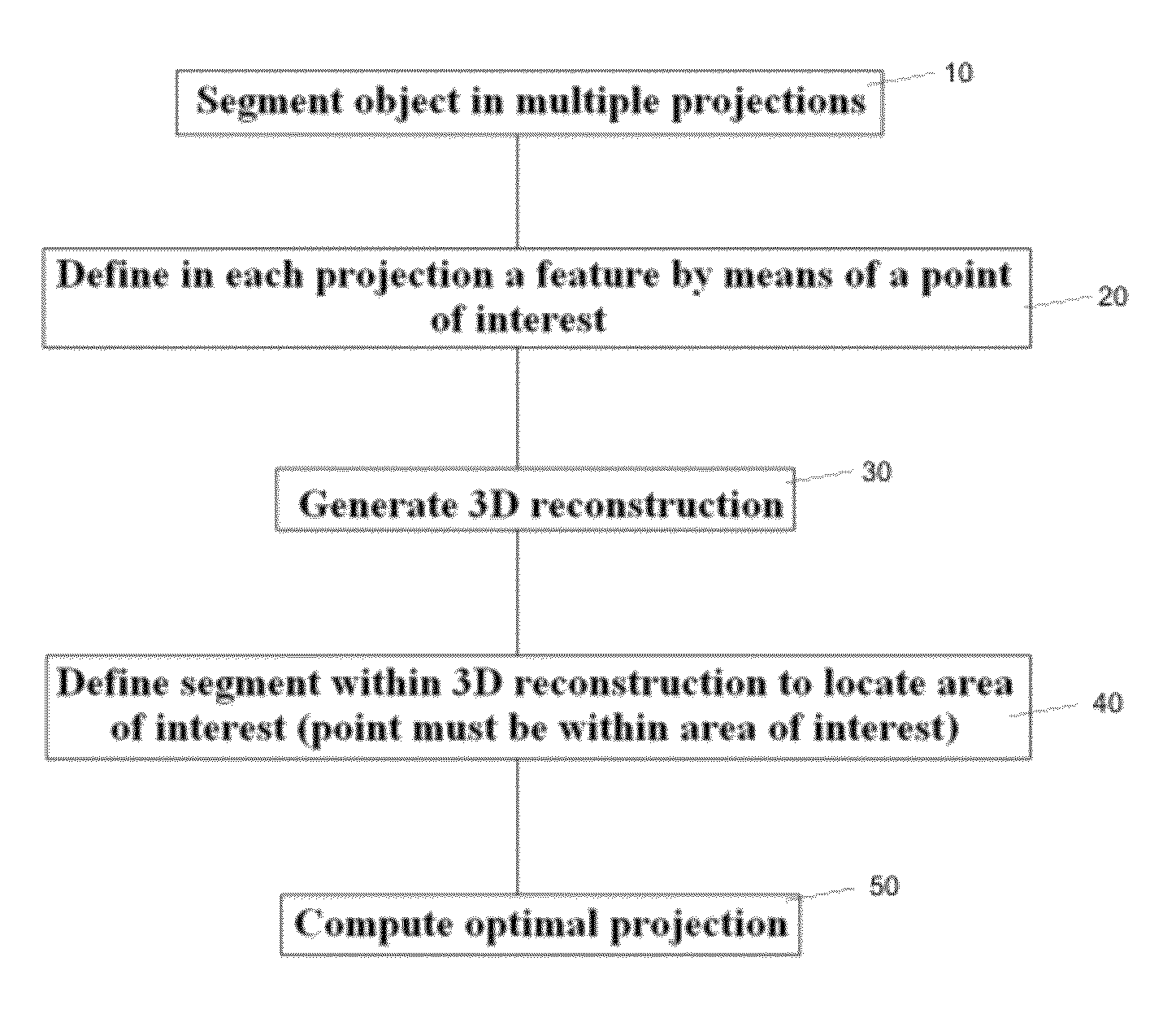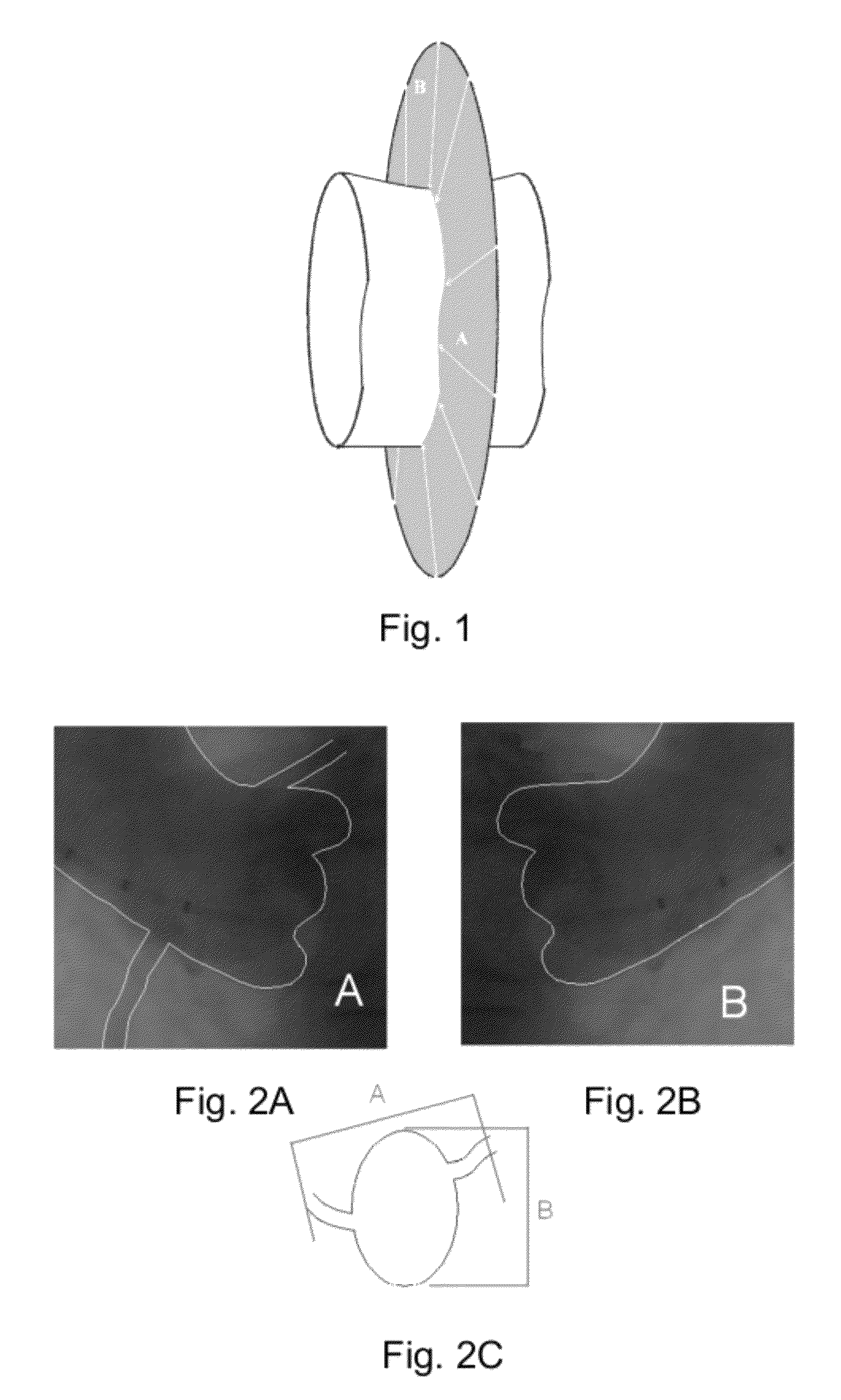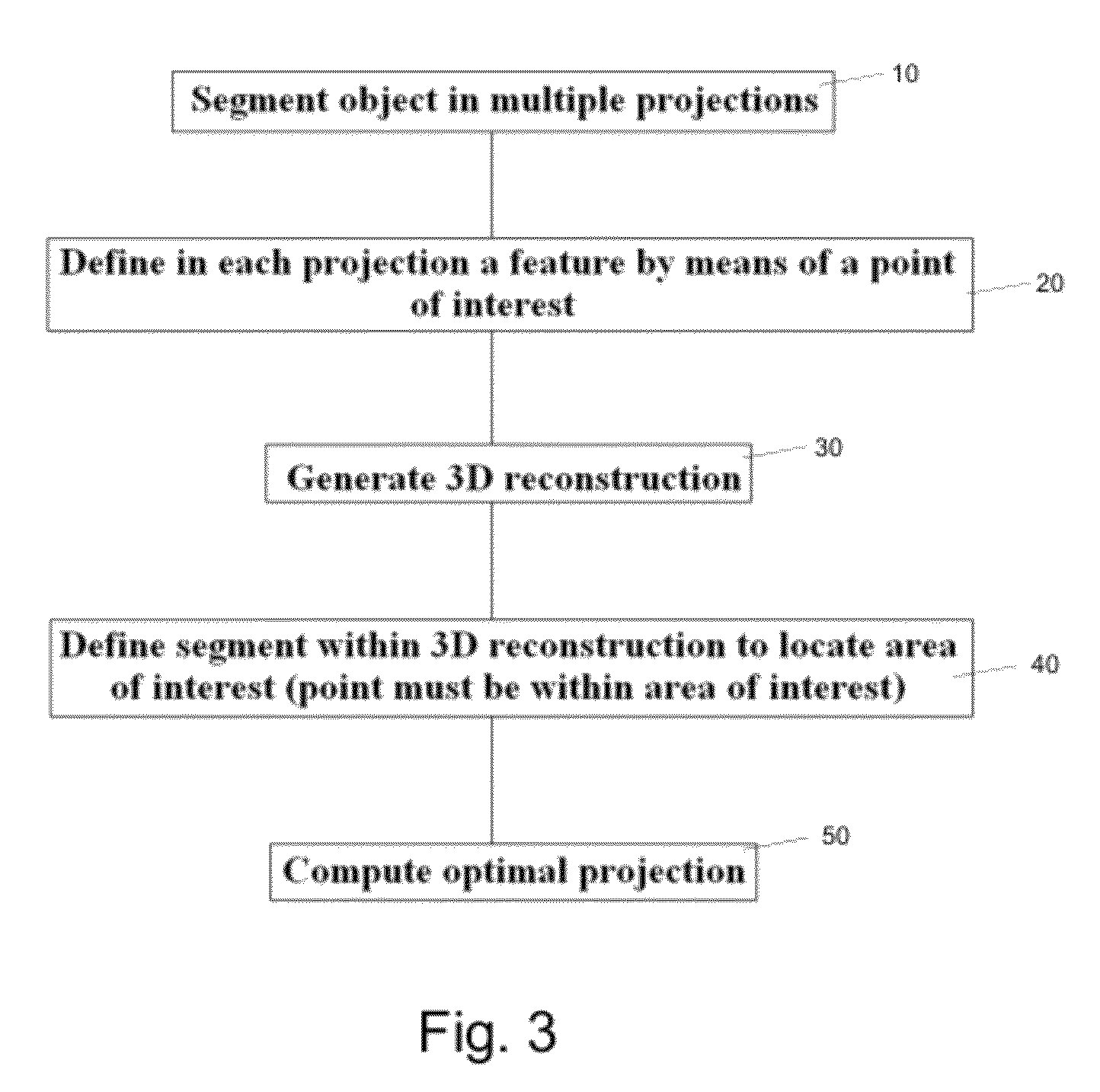Method and apparatus for determining optimal image viewing direction
a projection image and viewing direction technology, applied in the field of projection image acquisition and processing methods and apparatuses, can solve the problems of time-consuming processing, inability to perform imaging sessions in real-time, use of these machines during interventions, etc., and achieve the effect of reducing the foreshortening and relevancy of information
- Summary
- Abstract
- Description
- Claims
- Application Information
AI Technical Summary
Benefits of technology
Problems solved by technology
Method used
Image
Examples
Embodiment Construction
[0059]FIG. 1 shows a tubular organ, like an artery, having an elliptical cross section. All possible optimal projection view directions for this asymmetrical object lie on the indicated grey circle which is perpendicular to the axis of the object. However, as shown in FIGS. 2A and 2B, an optimal projection view direction chosen at point B (FIG. 2B) will contain different object information than an optimal projection view direction chosen from point A (FIG. 2A). Specifically, FIGS. 2A and 2B show the difference in coronary artery visibility in the coronary root when looking from different orthogonal views. In these two figures, FIG. 2A and FIG. 2B, the aortic root (schematically shown in FIG. 2C) is seen from two perspectives. For the view direction of FIG. 2A, the coronary arteries that arise from the aortic root can be seen clearly (see the upper left FIG. 2A. However, for the view direction of FIG. 2B, at the same aortic root both coronary arteries are absent in the image informat...
PUM
 Login to View More
Login to View More Abstract
Description
Claims
Application Information
 Login to View More
Login to View More - R&D
- Intellectual Property
- Life Sciences
- Materials
- Tech Scout
- Unparalleled Data Quality
- Higher Quality Content
- 60% Fewer Hallucinations
Browse by: Latest US Patents, China's latest patents, Technical Efficacy Thesaurus, Application Domain, Technology Topic, Popular Technical Reports.
© 2025 PatSnap. All rights reserved.Legal|Privacy policy|Modern Slavery Act Transparency Statement|Sitemap|About US| Contact US: help@patsnap.com



